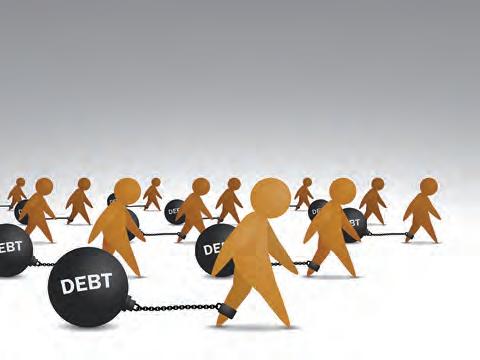“c04AggregateDemandPoliciesAndDomesticEconomicStability_PrintPDF” — 2022/6/7 — 8:31 — page 315 — #29
These two stabilisers in the budget are summarised in figure 4.11. FIGURE 4.11 The two types of stabilisers used in budgetary policy as an aggregate demand policy measure.
FS
The two types of budget ‘stabilisers’
Discretionary or structural budget stabilisers These are deliberate policy decisions announced by the treasurer to help regulate AD, promote domestic macroeconomic goals and improve living standards
In an upswing ... automatically tax receipts rise and welfare outlays fall, typically causing the budget outcome to gradually switch from an expansionary deficit to a contractionary surplus to help slow AD and economic activity
In an upswing ... the Treasuer could announce discretionary rises in particular tax rates and/or cuts in levels of specific outlays, typically causing the budget outcome to switch from an expansionary deficit to a contractionary surplus to help slow AD and economic activity
PA
G
E
PR O
O
Automatic or cyclical budget stabilisers These are unconscious changes built into the budget to spontaneously help regulate AD, promote domestic macroeconomic goals and improve living standards
TE
D
In a slowdown ... automatically the value of tax receipts fall and welfare outlays rise, typically causing the budget outcome to gradually switch from a contractionary surplus to an expansionary deficit to help lift AD and economic activity
In a slowdown ... the Treasurer could announce discretionary cuts in particular tax rates and/or rises in the levels of specific outlays, typically causing the budget outcome to switch from an contractionary surplus to an expansionary deficit to help lift AD and economic activity
CO RR EC
By changing the value of budget receipts relative to outlays, these two stabilisers alter the budget outcome and affect the levels of household consumption spending (C), business investment spending (I), government consumption spending (G1 ), government capital spending (G2 ), national savings (S) and hence AD. At least in theory, fiscal or budgetary policy applied countercyclically, should be able to help steer the economy along the narrow but ideal pathway between boom on the one hand and recession on the other. So how exactly do these automatic and discretionary stabilisers work?
N
4.7.1 The role of automatic stabilisers in influencing aggregate demand and stabilising the business cycle
U
Automatic stabilisers (also called cyclical stabilisers) involve upward and downward changes in the values of tax receipts and welfare outlays, without any deliberate, new policy decisions being made by the treasurer. They are driven solely by changes in economic activity and operate behind the scenes to countercyclically alter the budget outcome and stance, in a way to help stabilise AD. So, in a downturn, the budget stance would automatically switch towards more expansionary deficits, because as we shall soon see, less tax revenue would be collected and there would also be higher welfare outlays for the rising number of unemployed. In a slowdown, this would stimulate AD and promote the government’s macroeconomic goals and living standards.
TOPIC 4 Aggregate demand policies and domestic economic stability
315

































